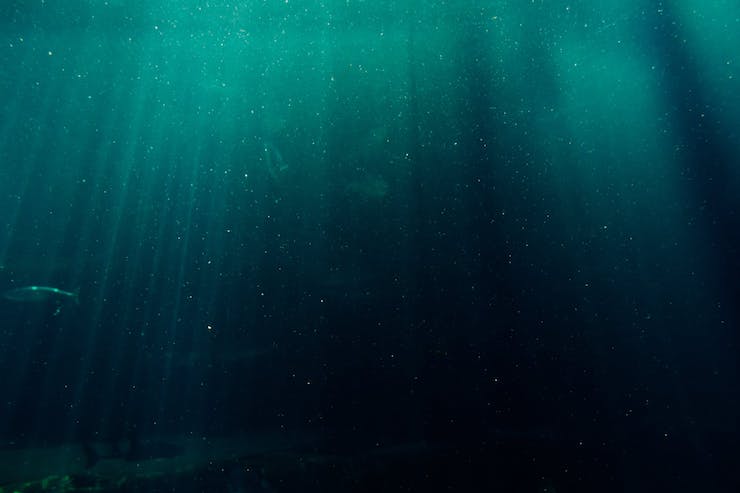
Because two thirds of the Earth’s surface is covered in water it is known as the Blue Planet. The extensive water on our planet is one of the reasons why life is so sustainable on Earth. As of yet, we have only explored about 5% of the Earth’s oceans, and that is mostly in the shallower areas. The deepest parts of the oceans are still a mystery to us. Exploration of the oceans is vital for us to have a better understanding of our Earth and how it can support us. Ocean exploration leads to us understanding weather patterns, accessing energy, food, and medicines, and predicting natural disasters like earthquakes. As explained on NOAA’s Office of Ocean Exploration and Research, a federal organization for ocean research, “Ocean exploration is about making discoveries, searching for things that are unusual and unexpected. Ocean exploration, however, is not randomly wandering in hopes of finding something new. It is disciplined and organized and includes rigorous observations and documentation of biological, chemical, physical, geological, and archaeological aspects of the ocean. Findings made through ocean exploration are fundamental to reducing unknowns in deep-ocean areas and providing high-value environmental intelligence needed to address both current and emerging science and management needs. Exploration helps to ensure that ocean resources are not just managed, but managed well, so those resources are around for future generations to enjoy.”
Over the last decades the majority of ocean exploration has been conducted through deep dives and sonar technology. In 1971 John Partridge founded Sonardyne with the mission to improve the safety and capabilities of underwater navigation with custom engineering of state of the art acoustic signal processing, and hardware design. Today Sonardyne is one of the leading marine exploration firms. To be able to maintain this status, Sonardyne has continued to use the most up to date marine research tools. According to their bio, “Whilst underwater acoustics remains at the very core of what we do, our business now reaches far beyond this, driven by both the possibilities of new technologies and the needs of our clients.” The most recent addition to their program is a broader integration of drones and the software driving them.
Sonardyne has developed a whole branch dedicated to utilizing drone technology. As they state, “Unmanned marine robotic platforms open the door to new possibilities across all marine sectors. Tethered Remotely Operated Vehicles (ROVs) allow offshore oil and gas fields to be safely and economically constructed… Autonomous Underwater Vehicles (AUVs) carry out multi-faceted missions considered too dangerous, too remote or too deep for divers, towfish and ROVs. They’re used to explore, map and monitor our oceans and when used in co-operation with Unmanned Surface Vehicles (USVs), provide surveyors, scientists and the military with a valuable force multiplier.” To ensure that they are providing their customers with the best drone systems possible, Sonardyne has recently acquired two established drone companies.
In the spring of 2019, Sonardyne purchased EIVA, a Danish engineering company that was founded in 1978. EIVA’s bio explains that they “provide software, equipment, integrated system solutions, rental services, 24/7 support and software training to a wide range of segments, covering virtually any subsea task.” Their services include: pipe and cable laying and inspections, ROV and AUV navigation software, 3D dredging software, surveying and mapping, virtual buoys, and more. Sonardyne Managing Director John Ramsden said of the new partnership, “EIVA and Sonardyne share many of the same corporate values including long-term commitment and focus towards customers, partners and employees. We see great potential in the EIVA product lines as well as synergies between the companies leading to new offerings. Sonardyne has the ability and willingness to accelerate the growth of the company. We are happy to see that the entire EIVA management team has chosen to stay on board to work with us into the future.”
This past month Sonardyne purchased another company as part of their continuing long term growth strategy. 2G Robotics was founded in 2007 in Ontario, Canada as an underwater technology startup with a focus in engineering, research, and development. They were the first company to provide underwater laser scanners for subsea and offshore inspections on a broad basis. The systems they design for ROVs and AUVs are being used in a wide range of industries like: defense, water distribution, research, civil infrastructure, hydro electricity, marine sciences, and more. 2G Robotic’s CEO Jason Gillham said, “Sonardyne is a great fit for us, with their existing global reach. We look forward to growing with their support and working with our new partners.”
Both EIVA and 2G Robotics have been working together for the last two years. Both will remain independent companies as they collaborate and rely on the resources they can all bring to the table to further underwater exploration. As EIVA stated, “The world is seeing a steady increase in operations at sea. This increase brings with it a need for solutions that will streamline the operations of organizations specializing in the opportunities offered by a ‘blue planet’, as well as ensure that these opportunities do not come at the expense of the environment.” The collaboration of these three companies will hopefully shed new light into the darkest corners of the oceans.
|